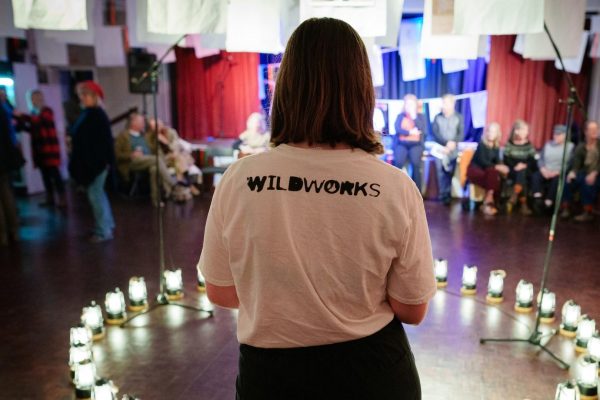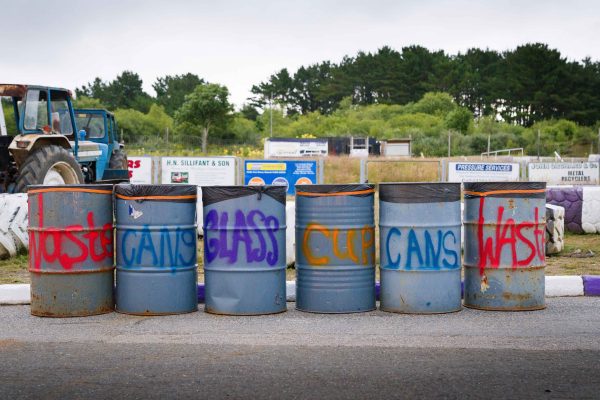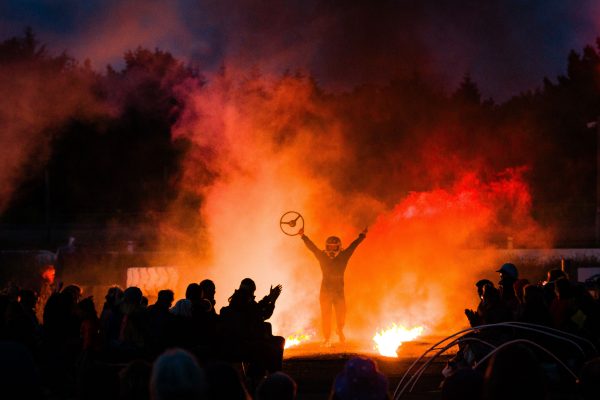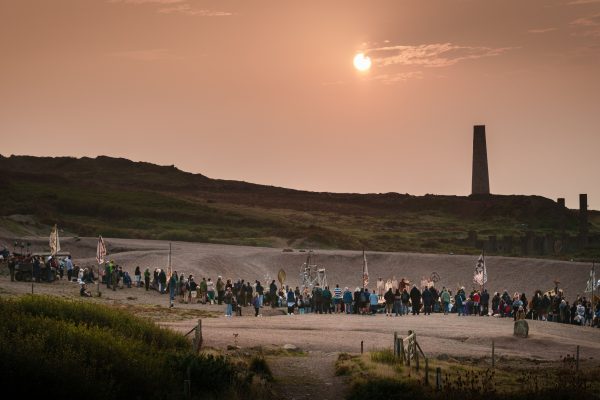In September of 2024 landscape theatre company Wildworks was kind enough to host me in the lead-up to their show, Stranger Beasts, taking place outdoors on the cliffs at Geevor Tin Mine, Penzance, Cornwall.
This expedition was part of my Arts Council England-funded work investigating the process of making theatre that responds to our climate/biodiversity crisis. I am fascinated with the question of what our future theatre might look like. What do audiences expect from theatre in a climate crisis? Can theatre respond? And if it can, how best should it go about it?
When I reached out, Wildworks responded with a warm hello and a disclaimer that they were on their own journey teasing out this question and that I was most welcome to come to see what observations I might make. And so I traveled to Cornwall and hung around gently bothering people with questions, taking pictures, drawings, notes, and observations. My goal – to get a sense of how one of the UK’s largest outdoor theatre companies is responding to land, the environment, and the concerns of its community in the creative process of its latest show.
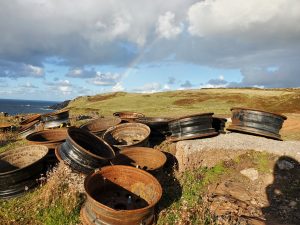
Wildworks is famous for its site-specific work, and the dramatic location of Stranger Beasts was no different. Geevor Tin Mine is a place that has many histories and stories. There is evidence of ancient tin mining, followed by early modern tin, copper, and arsenic mining, leading into the 20th century with the site’s closure, reopening, and then closure again, before becoming the museum and heritage site it is now. And then there are the animal and plant histories of the site. Plants like Cornish heath/heather, blackberry, thrift/sea cushion, and common ragwort grow everywhere at Geevor. Bees, slugs, gulls, rabbits, dragonflies, and flocks of sparrows can all be seen in the landscape. The overall impression of this site is of its many layers of meaning, the touch of many human and animal hands, and many voices all joining in a chorus that would influence the work being presented.
Stranger Beasts was a fable retold, with Belerion as the central figure, fighting for her right to love, autonomy, and dignity in the face of those who would abuse and misunderstand her. It most struck me as a tale of a fight against extraction. Belle experiences the deep grief that comes from being “excavated, gouged, hollowed” by her treatment at the hands of her family and community, and finds regeneration in the arms of a stranger who helps her to look on her scarred “mineral seams” without shame.
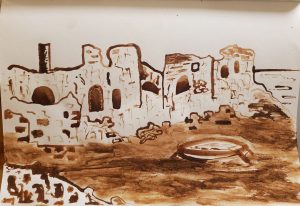
In reflecting on the relevance of the production to the theatre’s role in speaking to the climate crisis, I was struck by how many different layers of the show spoke to this theme. Belerion’s story be read as an analogy for our treatment of our lands, our denial of nature’s rights, and in the case of the character of the nurse – our failure to protect these rights in the face of pressure.
But it was the powerful impact of the site of Geevor that most spoke to this production and inspired me towards the potential of landscape theatre in a climate crisis. The dramatic slag heaps and jagged arsenic works of the site, dotted with stone funnels, presided over by swooping gulls, purple heather, and the sound of the crashing ocean made the more-than-human world a key player in the production.
It is when we recognise that our landscapes have the power to tell stories, that we might become better at valuing and preserving them. By giving landscape the right to become a storyteller, Wildworks elevates the power of the natural world to partner in making theatre. This is an exciting proposition for the future of theatre that responds to the climate crisis. Responding poorly to the climate crisis is in many ways a failure of imagination, and one of the ways we fail is by neglecting the power of our landscapes to speak and minimising their influence on our lives. Spending time in the creation of Stranger Beasts left me impressed with the power of partnering with land in storytelling and how it can influence an audience’s experience of art.
The audiences of Stranger Beasts were encouraged to read and enjoy this production on many levels; as a fable, as an incredible spectacle, and as an experience told in partnership with a land rich in histories of both extraction and regeneration – just like its heroine. As a theatremaker interested in the future of the climate crisis on stage, elevating the natural world back to its place as a storyteller is a thrilling proposition for our future, and one I am excited to explore.
Catherine Abigail Ward is a performer and theatremaker currently completing a Developing Your Creative Practice grant with ACE on theatre responding to the climate crisis. She can be found through her website and on Instagram.
Stranger Beasts was directed by Mydd Pharo and written by Mercedes Kemp and Mydd Pharo.
